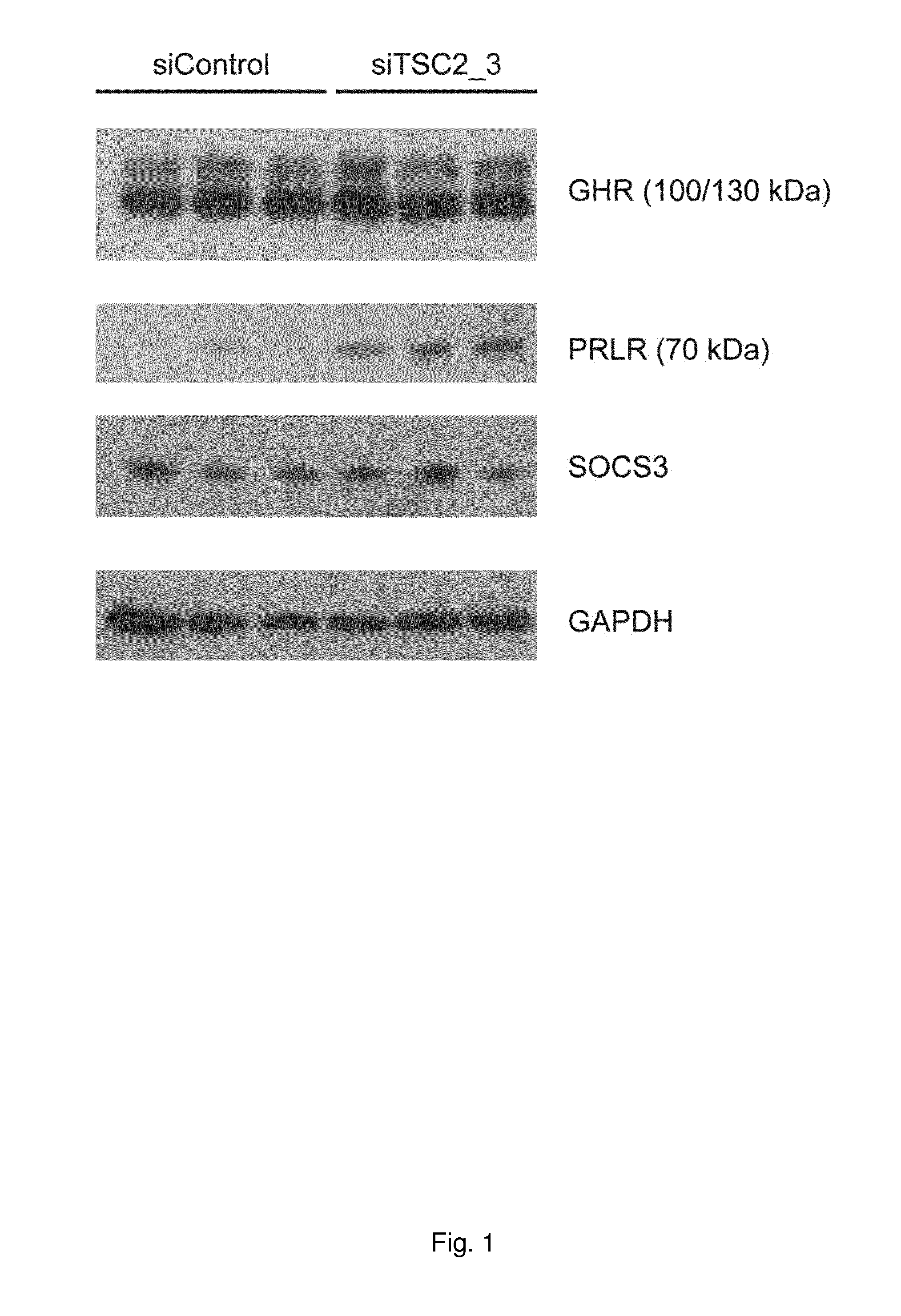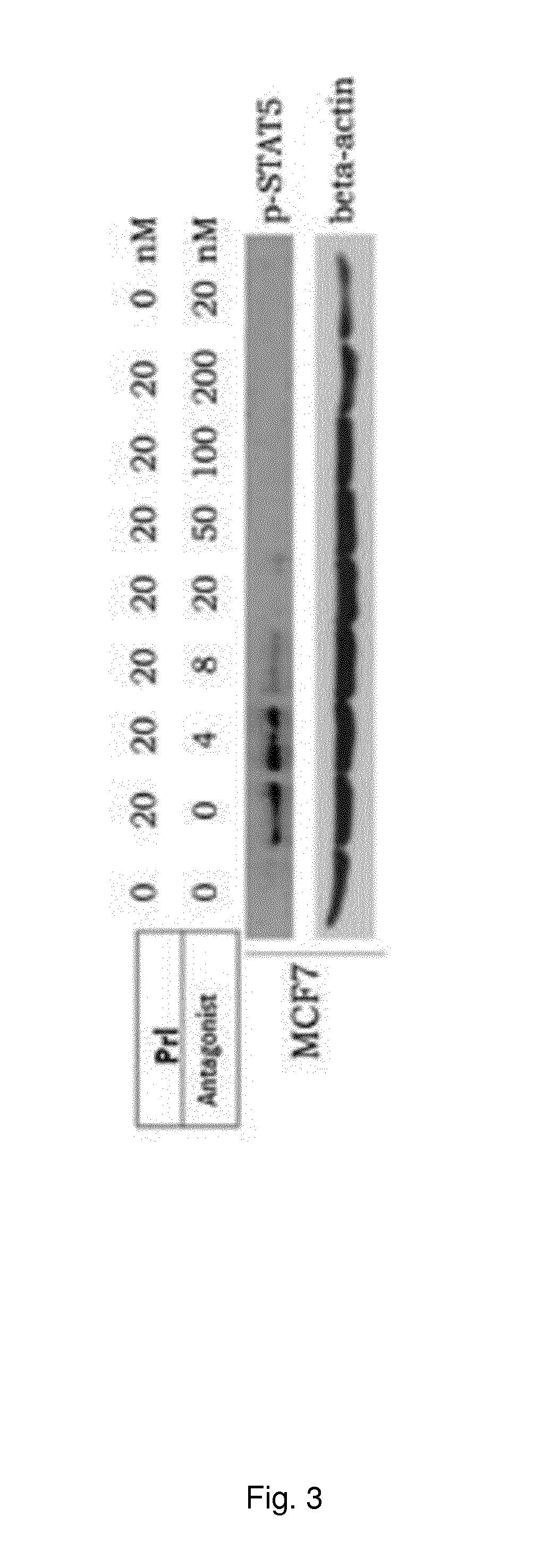Method for diagnosis and treatment of prolactin associated disorders
a prolactin and associated disease technology, applied in the direction of instruments, peptide/protein ingredients, drug compositions, etc., can solve the problems of reduced production, insufficient treatment of disease, limited value of extensive components list, etc., to reduce cell proliferation and reduce the effect of proliferation
- Summary
- Abstract
- Description
- Claims
- Application Information
AI Technical Summary
Benefits of technology
Problems solved by technology
Method used
Image
Examples
example 1
Prl Receptor Antagonist has an Effect In Vivo
[0365]Prl receptor antagonists (SEQ ID NO: 24) were used to circumvent consequences of hyperprolactinemia. A group of rats were infused with human Prl (5 microgram / h) using osmotic minipumps placed subcutaneously on the left flanking area on the back of each animal. The infusion of the Prl lasted for one week. One animal group received human Prl plus the Prl receptor antagonist. The high affinity Prl receptor antagonist (I) was separately infused using osmotic minipumps at a concentration of 5 microgram / h. This system mimics hyperprolactinemia because high levels of Prl are detectable in serum. The effect of hyperprolactinemia was subsequently studied using two different read-outs: changes in sex-steroids and gonadothropin follicle-stimulating hormone (FSH), luteinizing hormone (LH) and effects on liver gene expression. It was found that Prl elevation reduced levels of sex-steroids and LH / FSH. In terms of liver action, Prl also changed le...
example 2
TCS2 Regulates Prl Receptor Levels and Prl Sensitivity
[0366]Cultured cells were used to reduce the amount of TCS2 and this was followed by measurements of the amount of Prl receptors using Western blots. FIG. 1 shows the effect of reducing TSCS2 by siRNA in myo-fibroblasts derived from Eker rats. These cells have a genetic deletion of one TCS2 allele. FIG. 1 shows that Prl receptors were increased by TCS2 siRNA. One method to demonstrate that increased Prl receptor levels lead to an increased Prl sensitivity is to add Prl (e.g. 10 nM) to cells with or without reduction of TCS2 and analyse effects on STAT activation (phosphorylation of STAT5 / STA3). In such experiments we have demonstrated an increased Prl sensitivity in cells deficient of TCS2.
example 3
SOCS2 Regulates Prl Receptor Levels
[0367]Mice where the SOCS2 gene was ablated were used to analyse levels of Prl receptors in liver and muscle. The experimental procedure was to prepare protein extract to be separated on poly-acryl amid gels. Proteins on the gel were subsequently transferred onto PVDF membranes that were used for anti-body detection of Prl receptors. The results show that the levels of Prl receptors were increased in these tissues and taken together with TSC2 results (cf. example 2), we conclude that two types of intracellular proteins regulate the levels of Prl receptors (FIG. 2).
PUM
| Property | Measurement | Unit |
|---|---|---|
| Fraction | aaaaa | aaaaa |
| Fraction | aaaaa | aaaaa |
| Fraction | aaaaa | aaaaa |
Abstract
Description
Claims
Application Information
 Login to View More
Login to View More - R&D
- Intellectual Property
- Life Sciences
- Materials
- Tech Scout
- Unparalleled Data Quality
- Higher Quality Content
- 60% Fewer Hallucinations
Browse by: Latest US Patents, China's latest patents, Technical Efficacy Thesaurus, Application Domain, Technology Topic, Popular Technical Reports.
© 2025 PatSnap. All rights reserved.Legal|Privacy policy|Modern Slavery Act Transparency Statement|Sitemap|About US| Contact US: help@patsnap.com



